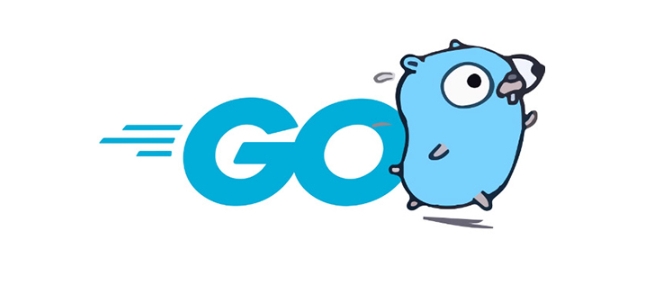如何在GO中導入本地軟件包?
要正確導入本地包,需使用Go模塊並遵循目錄結構與導入路徑匹配原則。 1. 使用go mod init初始化模塊,如go mod init example.com/myproject;2. 將本地包放在子目錄中,如mypkg/utils.go,包聲明為package mypkg;3. 在main.go中通過完整模塊路徑導入,如import "example.com/myproject/mypkg";4. 避免相對導入、路徑不匹配或命名衝突;5. 對於模塊外的包可使用replace指令。只要確保模塊初始化、目錄結構合理、導入路徑正確、包名一致,即可成功導入本地包。

Importing a local package in Go is straightforward, but it depends on whether you're using Go modules (modern approach) or the old GOPATH-based structure. Since Go 1.11 , modules are the standard, so we'll focus on that.

1. Use Go Modules (Recommended)
First, make sure your project is initialized as a Go module:
go mod init example.com/myproject
This creates a go.mod file, which tracks your module and dependencies.

Project structure
myproject/
├── go.mod
├── main.go
└── mypkg/
└── utils.goWrite the local package
In mypkg/utils.go :
package mypkg
import "fmt"
func SayHello() {
fmt.Println("Hello from mypkg!")
}Import the local package in main.go
package main
import "example.com/myproject/mypkg"
func main() {
mypkg.SayHello()
}? The import path is based on your module name (
example.com/myproject) subdirectory path (mypkg).
Run it
go run main.go
Go automatically resolves the local package via the module structure.
2. Multiple Packages in Subdirectories
You can organize deeper:
myproject/
├── go.mod
├── main.go
└── pkg/
└── mathpkg/
└── math.go In pkg/mathpkg/math.go :
package mathpkg
func Add(a, b int) int {
return ab
} In main.go :
package main
import (
"example.com/myproject/pkg/mathpkg"
"fmt"
)
func main() {
result := mathpkg.Add(2, 3)
fmt.Println("Result:", result)
}Still works the same — just adjust the import path accordingly.
3. Common Mistakes to Avoid
- ❌ Using relative imports like
import "./mypkg"— not allowed in Go. - ❌ Forgetting to match the module path in
go.modwith the import path. - ❌ Naming your local package directory the same as a standard library or external package (can cause confusion).
4. Local Packages Outside the Main Module (eg, Vendor or Replace)
If you're working with a package in a separate folder not under the main module, you can use replace directives in go.mod for development:
// In go.mod replace example.com/mypkg => ../mypkg
This is useful when developing multiple related modules locally.
But for most cases — keep the package under your module directory and use the full module path to import .
Basically, just:
✅ Initialize with go mod init
✅ Put your package in a subdirectory
✅ Import using module-name/subdir
✅ Make sure package name in code matches
And it'll work.
以上是如何在GO中導入本地軟件包?的詳細內容。更多資訊請關注PHP中文網其他相關文章!

熱AI工具

Undress AI Tool
免費脫衣圖片

Undresser.AI Undress
人工智慧驅動的應用程序,用於創建逼真的裸體照片

AI Clothes Remover
用於從照片中去除衣服的線上人工智慧工具。

Clothoff.io
AI脫衣器

Video Face Swap
使用我們完全免費的人工智慧換臉工具,輕鬆在任何影片中換臉!

熱門文章

熱工具

記事本++7.3.1
好用且免費的程式碼編輯器

SublimeText3漢化版
中文版,非常好用

禪工作室 13.0.1
強大的PHP整合開發環境

Dreamweaver CS6
視覺化網頁開發工具

SublimeText3 Mac版
神級程式碼編輯軟體(SublimeText3)
 登錄的一些最佳實踐是什麼?
Aug 04, 2025 pm 04:48 PM
登錄的一些最佳實踐是什麼?
Aug 04, 2025 pm 04:48 PM
使用結構化日誌記錄、添加上下文、控制日誌級別、避免記錄敏感數據、使用一致的字段名、正確記錄錯誤、考慮性能、集中監控日誌並統一初始化配置,是Go中實現高效日誌的最佳實踐。首先,採用JSON格式的結構化日誌(如使用uber-go/zap或rs/zerolog)便於機器解析和集成ELK、Datadog等工具;其次,通過請求ID、用戶ID等上下文信息增強日誌可追踪性,可通過context.Context或HTTP中間件注入;第三,合理使用Debug、Info、Warn、Error等級別,並通過環境變量動
 如何在Go中獲得當前時間
Aug 06, 2025 am 11:28 AM
如何在Go中獲得當前時間
Aug 06, 2025 am 11:28 AM
usetime.now()togetThecurrentLocalTimeasatime.timeObject; 2. formattheTime usedtheformatMethodWithLayoutSlike“ 2006-01-0215:04:05”; 3.getutctimebybbybbycallingcallingutc {
 如何在GO中解析XML數據
Aug 05, 2025 pm 07:24 PM
如何在GO中解析XML數據
Aug 05, 2025 pm 07:24 PM
解析XML數據在Go中非常簡單,只需使用內置的encoding/xml包即可。 1.定義帶有xml標籤的結構體來映射XML元素和屬性,如xml:"name"對應子元素,xml:"contact>email"處理嵌套,xml:"id,attr"讀取屬性;2.使用xml.Unmarshal將XML字符串解析為結構體;3.對於文件,使用os.Open打開後通過xml.NewDecoder解碼,適合大文件流式處理;4.處理重複元素時,在結構
 如何在GO中創建和使用自定義錯誤類型
Aug 11, 2025 pm 11:08 PM
如何在GO中創建和使用自定義錯誤類型
Aug 11, 2025 pm 11:08 PM
在Go中,創建和使用自定義錯誤類型能提升錯誤處理的表達力和可調試性,答案是通過定義實現Error()方法的結構體來創建自定義錯誤,例如ValidationError包含Field和Message字段並返回格式化錯誤信息,隨後可在函數中返回該錯誤,通過類型斷言或errors.As檢測具體錯誤類型以執行不同邏輯,還可為自定義錯誤添加行為方法如IsCritical,適用於需結構化數據、差異化處理、庫導出或API集成的場景,而簡單情況可用errors.New,預定義錯誤如ErrNotFound可用於可比
 您如何配置GO代碼以進行性能?
Aug 05, 2025 am 08:50 AM
您如何配置GO代碼以進行性能?
Aug 05, 2025 am 08:50 AM
Go代碼性能分析可通過內置pprof工具實現,首先導入\_"net/http/pprof"啟用調試端點;1.對HTTP服務,在程序中啟動localhost:6060的pprof接口;2.使用gotoolpprofhttp://localhost:6060/debug/pprof/profile?seconds=30收集30秒CPU性能數據;3.通過gotoolpprofhttp://localhost:6060/debug/pprof/heap分析內存分配情況;4.啟用run
 如何在GO應用程序中執行登錄?
Aug 04, 2025 pm 03:48 PM
如何在GO應用程序中執行登錄?
Aug 04, 2025 pm 03:48 PM
使用標準庫log包適合簡單場景,但缺乏日誌級別和結構化支持;2.Go1.21 推薦使用內置的slog,支持結構化日誌和多種處理器,適合大多數現代應用;3.高性能生產環境首選zap,具備極快的處理速度和豐富的功能;4.避免在新項目中使用已不再活躍維護的logrus;應根據Go版本、性能需求和是否需要結構化日誌來選擇合適的庫,優先考慮slog或zap。
 使用GO和雲功能構建無服務器API
Aug 05, 2025 pm 01:21 PM
使用GO和雲功能構建無服務器API
Aug 05, 2025 pm 01:21 PM
要構建一個無服務器API,需先設置Go環境並安裝GoogleCloudSDK,然後編寫一個HTTP函數處理請求,最後通過gcloudCLI部署到CloudFunctions。 1.安裝Go1.18 和GoogleCloudSDK並配置項目;2.創建Go模塊並編寫HTTP處理函數,支持GET和POST方法,處理JSON輸入並返迴響應;3.簡化代碼僅保留Handler函數,移除本地服務器邏輯;4.使用gcloud命令部署函數,指定運行時、入口點和触發方式;5.測試API的GET和POST接口,驗證返回









